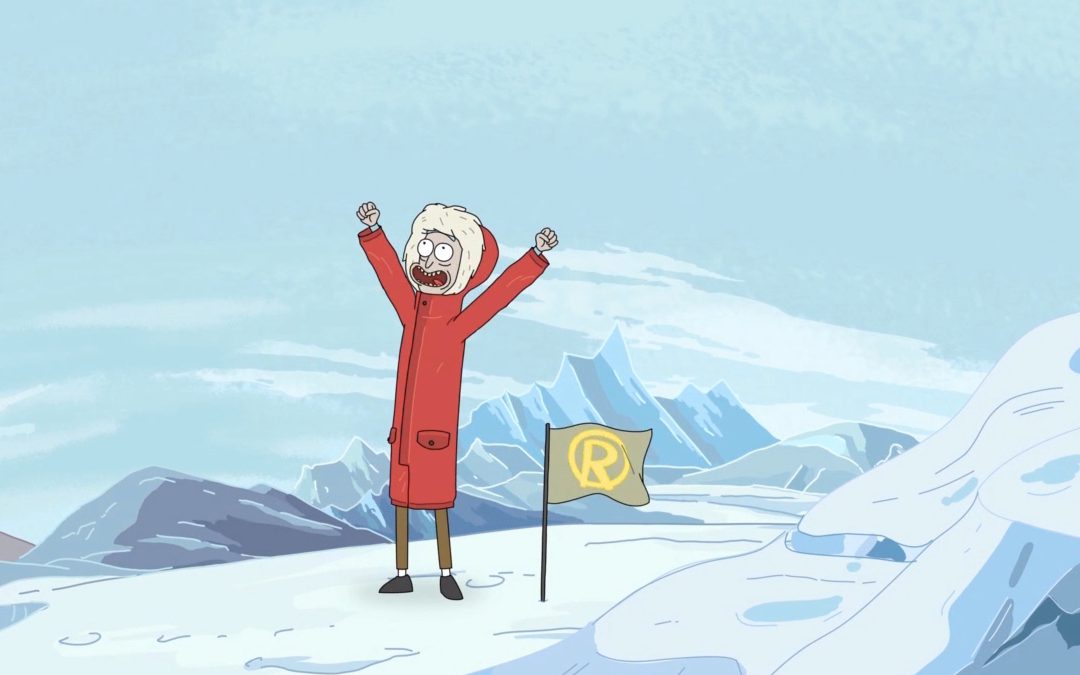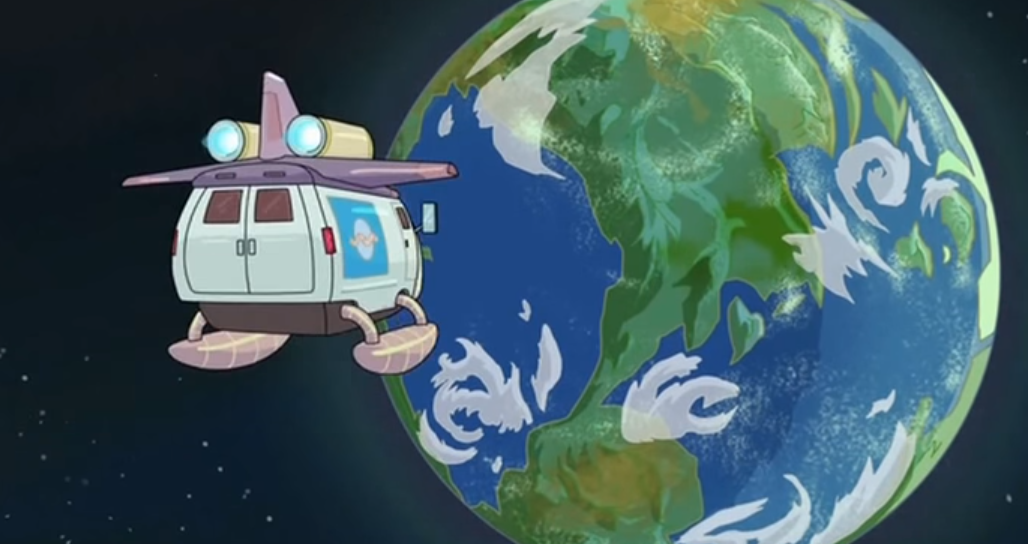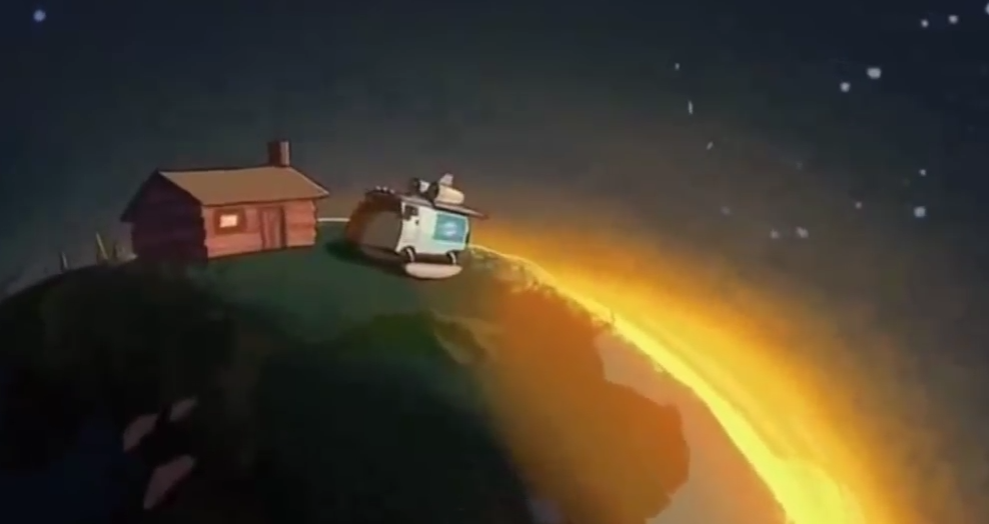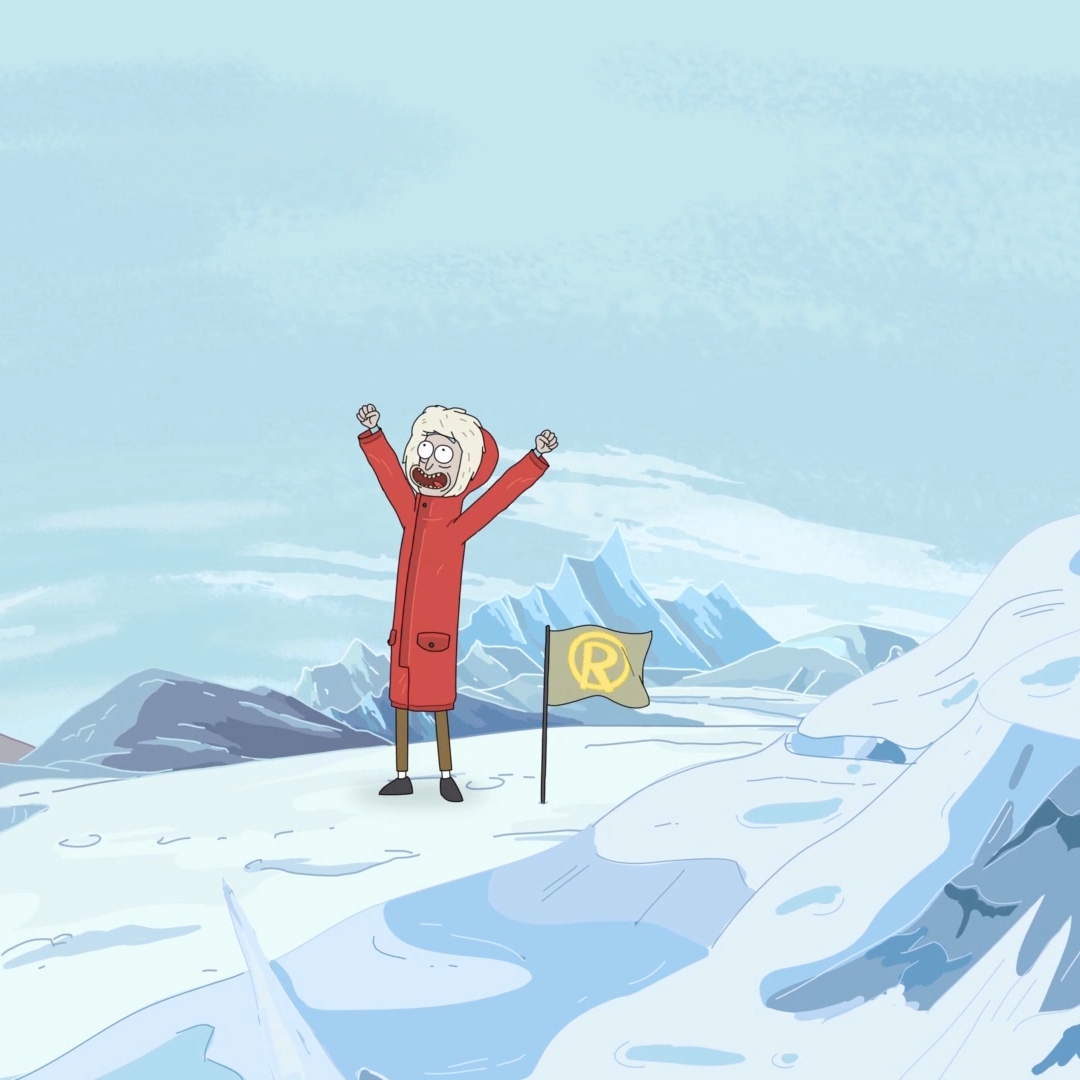In just two and a half seasons, Rick and Morty has shown us a huge variety of planets – weird, obscene, funny, normal, big and…small.
Looking back on the Season 2 season finale, “Wedding Squanchers,” Rick, Morty and the family find themselves on the run after a wedding turns into an ambush for Rick and his friends. After telling his family that they can never go back to earth, Rick starts hunting for replacement homeworlds, and…long story short…they settle on a tiny version of earth.
According to Rick, the planet is one of three that is at least 90% like earth and is outside federal jurisdiction.
The family lands and are basically, giants on Tiny Earth. As they’re there, they are walking normally, like they’re on earth – with normal earth gravity.
You can see where this is going, can’t you?
Let’s get into the science of Ricky and Morty’s Tiny Earth and see if we can figure out its gravity and if you’d be walking around like it was no big deal.
So – the morning after landing, when Rick comes in and asks if he’s smelling bacon, the family tells him that they had discovered (and subsequently made extinct) a species of tiny pig off the coast of “New Australia” which, according to Beth is, “about 30 yards east,” to which Morty adds, “or 300 yards west.”
Boom. We’ve got a meaningful number.
If Morty and Beth are describing the same point, and we know it’s distance from their point, both east and west, so we know the distance around the full sphere, or the circumference. We’re going to assume Morty and Beth were talking about 30 and 300 yards due east and due west, respectively. The full circumference around Tiny Earth? 330 yards.
Now we can crack this nut.
What we’re trying to do is figure out the gravitational pull of Tiny Earth. Here’s how we’re going to do it.
The formula we need is the gravitational field formula:
g = Gm/r2
Where:
g = the gravitational field strength in m/s2
G = the Cavendish/gravitational constant: 6.67259 x 10-11 N m2/kg2
m = the mass of the planet in kilograms
r = the distance from the center of the planet, equal to the radius of the planet, in meters
Put the values of m and r in for earth (5.98 x 1024 kg and 6.38 x 106 m, respectively) and you’ll get right around 9.81 m/s2, the accepted value for the earth’s gravitational field strength.
So how do we get things going for Tiny Earth? Problem solving. What do we have, and what do we need?
We’ve got the circumference of Tiny Earth in yards and that’s it. We’ll need to calculate everything for the formula above. Let’s start with the radius of Tiny Earth.
Tiny Earth’s Tiny Radius
We have the circumference of Tiny Earth, so we can work backwards with the formula for circumference to calculate the radius. Before we do that, we need to get our yards into meters. A quick conversion tells us that 30 yards is equal to about 302 meters.
The circumference of a sphere is the same as the circumference of a circle, so we’ll use that formula:
circumference = 2πr
Rearrange to solve for r:
r = circumference/2π
r = 302/ 2π
radius = 48 meters
Easy. The next part has a couple of steps, and we’ll need this value for the radius.
Tiny Earth’s Tiny Mass
This is a stop sign for a lot of my students when I assign something like this in my physics class. I think the big problem is that the answer to the question is so simple, they completely miss it. We need the mass of Tiny Earth, right? We know the radius of Tiny Earth, and from that we can figure out the volume of Tiny Earth. Remember – Rick said that these three planets were all at least 90% like earth. To keep things simple, let’s assume that Tiny Earth is 100% like earth (we can tweak those numbers later if we want to, but for now, let’s just get the problem working…)
The earth is a rocky planet or a known density, and Tiny Earth would have that same density. And as we all learned early, early on in science, density = mass/volume and the density of earth is 5520 kg/m3. Aha.
So – what’s the volume of Tiny Earth? We need the formula for the volume of a sphere:
V = 4/3 πr3
Plug in 48 for r, cube it and complete the calculation.
Volume of Tiny Earth = 463,240 m3
Now for mass:
Density = mass/volume
mass = (density)(volume)
mass = 2.6 x 109 kg
And like that, we’re good to go.
The Gravity of Tiny Earth
This part is simple – just plug the values into the gravitational field strength formula up above, and you’re good to go.
I’ll trust you to do the calculation and the appropriate unit cancellation. Be careful – 9 times out of 10 my students will have everything correct in the set-up, and then mess something up in the calculation.
g = 7.5 x 10-5 m/s2
Wow – that’s like…nothing. The gravitational field strength on the moon is a relatively robust 1.62 m/s2.
This would affect everything in our reality – for example, we could easily calculate the escape velocity (how fast you need to move upward in order to escape the gravitational field of Tiny Earth), using the formula:
ve = √2Gm/r
ve = √2(6.673 x 10-11)/48
ve = 0.08 m/s, or about 8 cm per second.
Jumping up would be overkill. That’s waaaay slower than an easy jog (about 3 m/s). If you didn’t stay still, just walking would get you off Tiny Earth.
Just for comparison, the earth’s escape velocity is 11,184 m/s.
And the weak gravitational field would also affect how quickly things fall. Applying the free fall formula under these circumstances, we can show just how wonky that tiny bit of gravity would be if you dropped something from 2 meters (a little less than Rick’s height) on Tiny Earth:
The free fall formula:
x = 1/2 g t2
Where:
x = the distance fallen in meters
t = time in seconds
rearranging to solve for time:
t = √2x/g
t = 73 seconds
Just for comparison (and using the same formula), on real earth, an object dropped from 2 meters lands about .64 seconds after you drop it.
But…But,…But…They Seemed Okay…
Sure -the only strange thing was the size of the planet. Rick and the family seemed like they were just fine otherwise, or, as we’re concerned, they seemed as if gravity was just fine on Tiny Earth. How would that work?
Tiny Earth was Tiny Earth, so the size is set. What’s the only way that the gravitational field strength can change? The mass of Tiny Earth has to change. Normal earth gravity is 9.8 m/s2, so what do we have to do to get Tiny Earth’s g value up to that same value? Crank that mass. By how much? Let’s talk math and the formula we used earlier, but this time, we’re solving for mass, so…
g = Gm/r2
9.8 = (6.673 x 10-11)(m)/(48)2
Reararange and solve for mass – we find that for the gravity of Tiny Earth to be the same as real earth’s, the mass will be:
m = 3.39 x 1014 kg
Okay – so what? What can we do with that?
We can figure out what Tiny Earth was made from. Remember density? If Tiny Earth has the same gravity as earth, we know what it’s mass has to be, and its volume hasn’t changed, so we can calculate the density:
D = m/v
D = 3.39 x 1014/463,247
Density of Tiny Earth (for normal earth gravity) = 7.3 x 108 kg/m3
That’s basically the same density as a white dwarf star – a star near the end of its life which has roughly the mass of the sun with the volume of the earth.
Tiny Earth isn’t very earth-like at all, when it comes down to it.
If you want to tweak this out and play with values that are say, 92.3% earth like, then you’re talking about changing the density which would affect the mass. If you’re trying to make Tiny Earth work that way, you’re going the wrong direction – a smaller mass will only decrease the gravitational field strength, but give it a shot.
But that’s not quite all – living on Tiny Earth would be its own horror show. Over at xkcd, Kevin Munroe went into depth about what “living” on a tiny earth/rock/asteroid would be like, using The Little Prince as a launching point. As Munroe points out, the farther away you get from the center of the planet, the more the gravitational field shrinks, so as a result the gravitational field would have one value you’re your head and another near your feet. It would not be a fun time.










